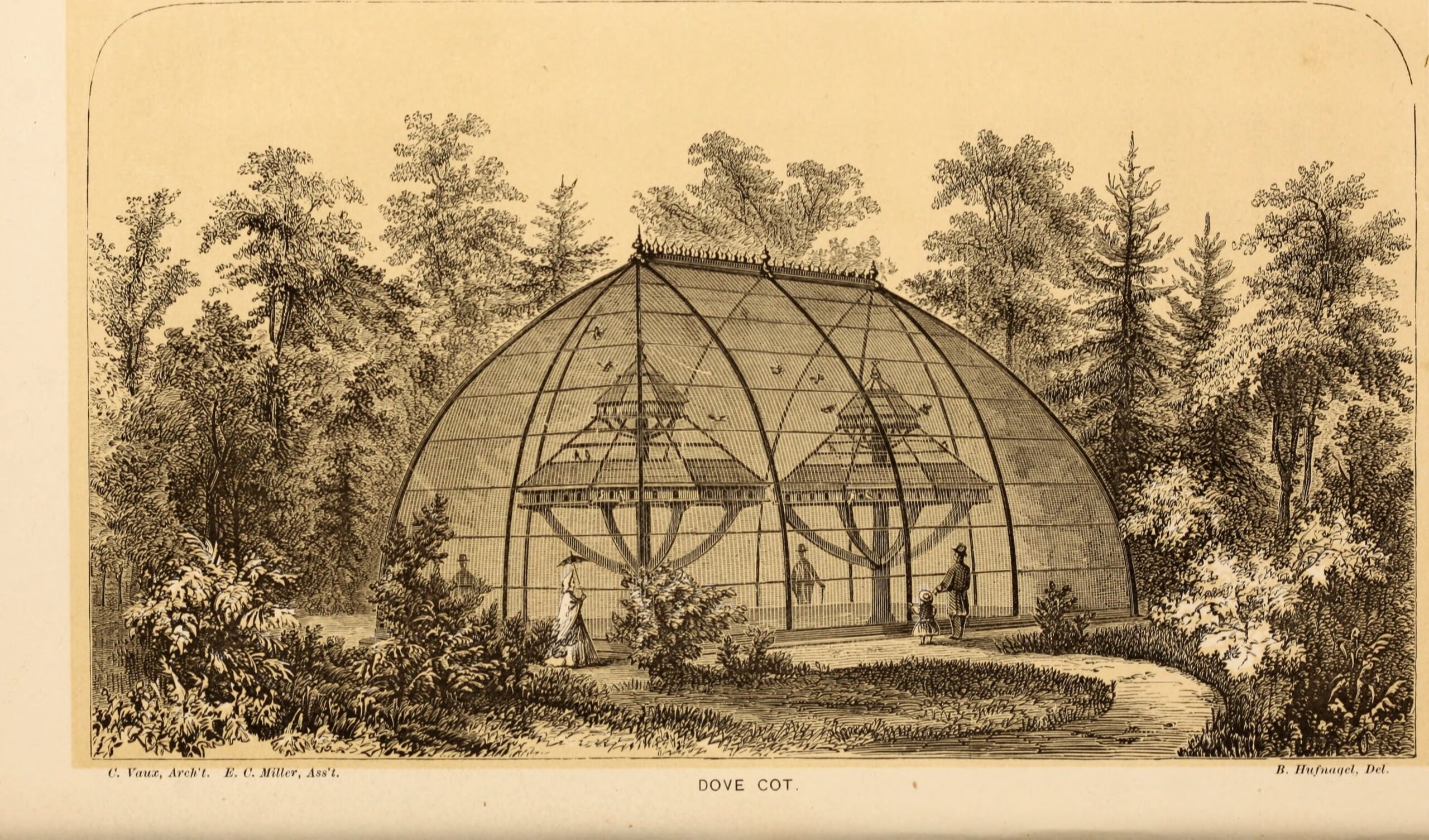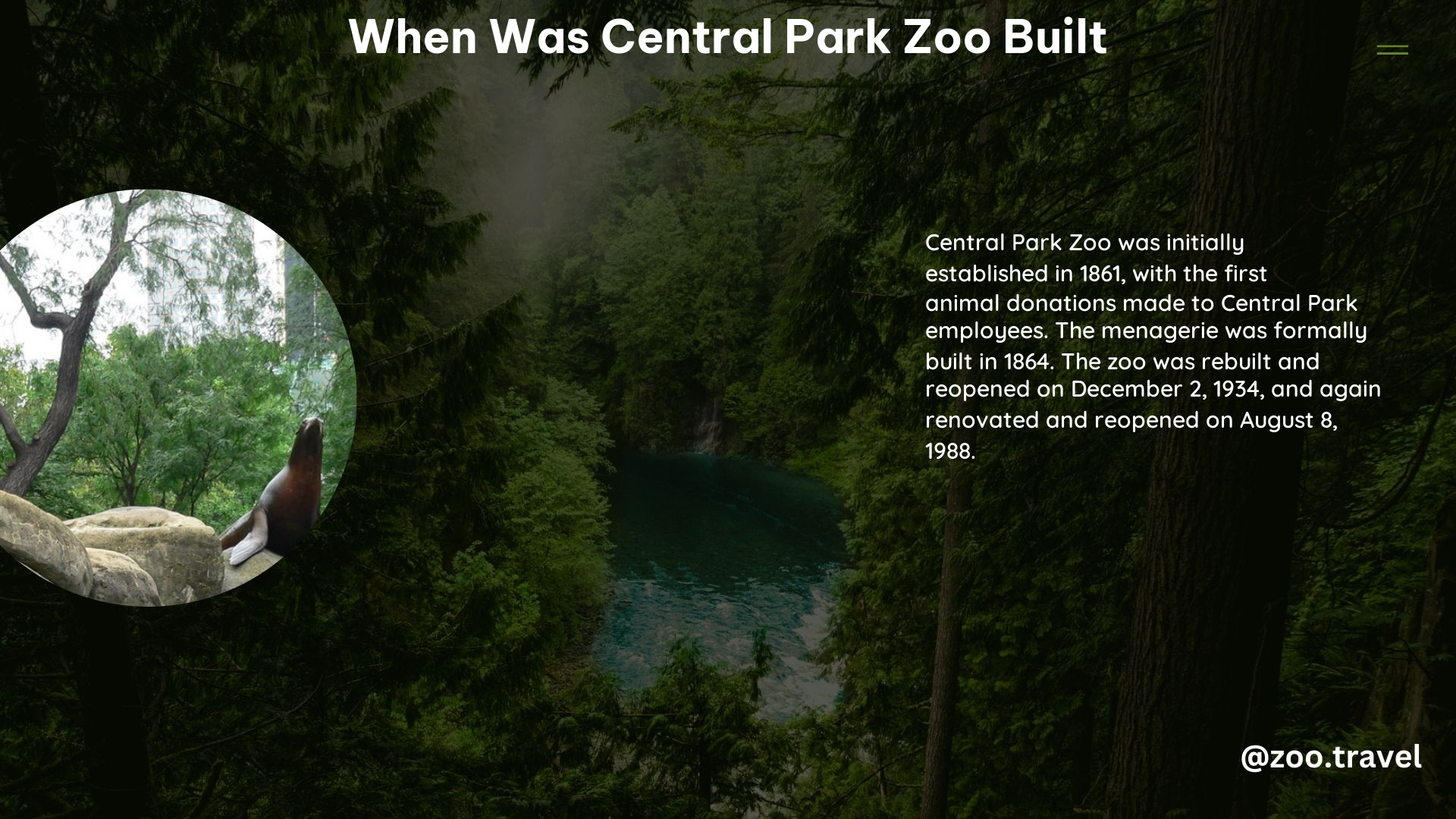The Central Park Zoo was originally built in 1864, although it has undergone significant transformations over the years. This historic zoo is one of the oldest and most popular zoos in the United States, offering visitors a unique opportunity to explore a diverse range of animal species in a natural habitat setting.
The Birth of the Central Park Menagerie

In 1864, the State Legislature authorized the city Parks Commission to establish a zoo, leading to the creation of the Central Park Menagerie. This initial collection of animals was gradually built through donations, with over 250 animals added in 1864 and 1865. One notable contribution came from General William T. Sherman, who donated three African Cape buffaloes to the zoo.
The 1934 Remodel

The Central Park Zoo underwent a significant transformation in 1934 when Commissioner of Parks Robert Moses oversaw a remodel of the zoo as part of a Works Progress Administration (WPA) project. This renovation aimed to create a more modern and naturalistic environment for the animals, moving away from the traditional caged exhibits.
The 1988 Transformation
In 1988, the Wildlife Conservation Society (WCS) assumed management of the Central Park Zoo and embarked on a five-year transformation project. The goal was to create a more immersive and educational experience for visitors, with a focus on natural habitat exhibits. This renovation resulted in the reopening of the zoo with a renewed focus on conservation and animal welfare.
The Central Park Zoo Today
Today, the Central Park Zoo is a beloved destination for both locals and tourists alike. The zoo is home to a diverse collection of animals, including snow leopards, red pandas, sea lions, and more. Visitors can explore the various exhibits, attend educational programs, and even witness animal feedings.
One of the unique features of the Central Park Zoo is its focus on natural habitat exhibits. The zoo’s design aims to provide the animals with an environment that closely resembles their natural habitats, allowing visitors to observe the animals in a more authentic setting.
The Zoo’s Conservation Efforts
In addition to its role as a popular tourist attraction, the Central Park Zoo is also actively involved in conservation efforts. The zoo participates in various breeding programs and research initiatives to support the protection of endangered species. Visitors can learn about these conservation efforts through educational displays and interactive exhibits.
Accessibility and Amenities
The Central Park Zoo is located within the iconic Central Park, making it easily accessible to both locals and visitors. The zoo offers a range of amenities, including food and beverage options, gift shops, and restrooms. Visitors can also take advantage of the zoo’s guided tours and educational programs to enhance their experience.
Conclusion
The Central Park Zoo has a rich history that spans over 150 years. From its humble beginnings as the Central Park Menagerie to its current status as a modern, conservation-focused zoo, the Central Park Zoo has evolved to meet the changing needs and expectations of its visitors. Whether you’re a local or a tourist, a visit to the Central Park Zoo is a must-do experience that offers a unique glimpse into the world of wildlife and conservation.
Reference:
– Central Park Zoo History
– Central Park Zoo Exhibits
– Central Park Zoo Conservation Efforts
